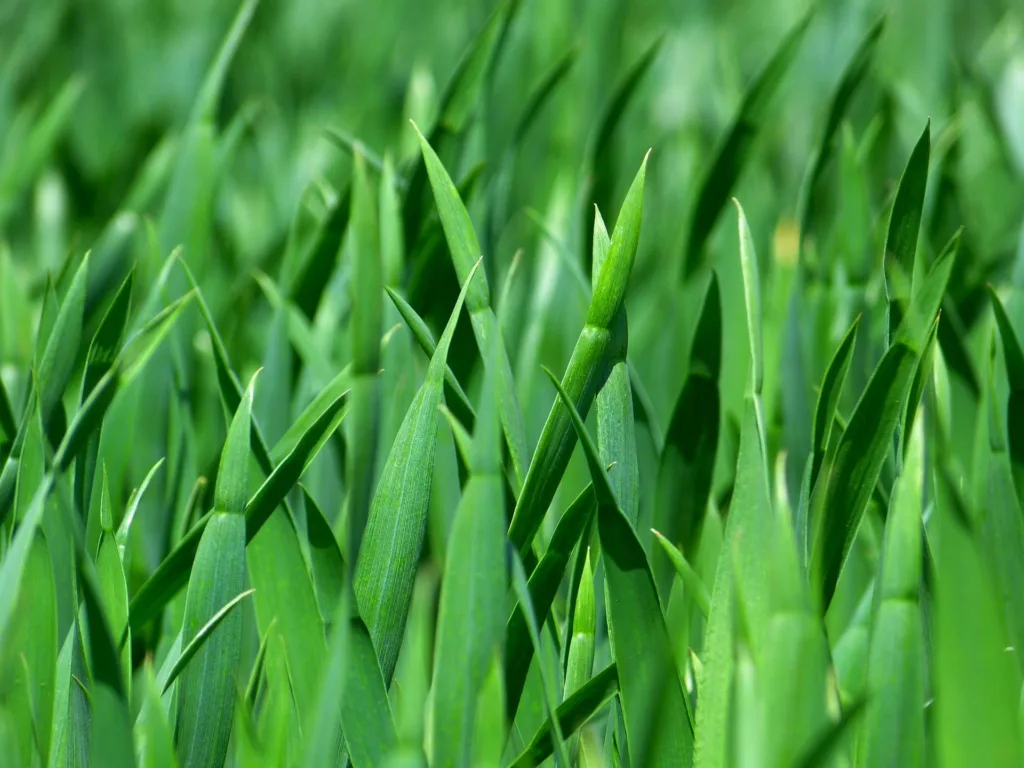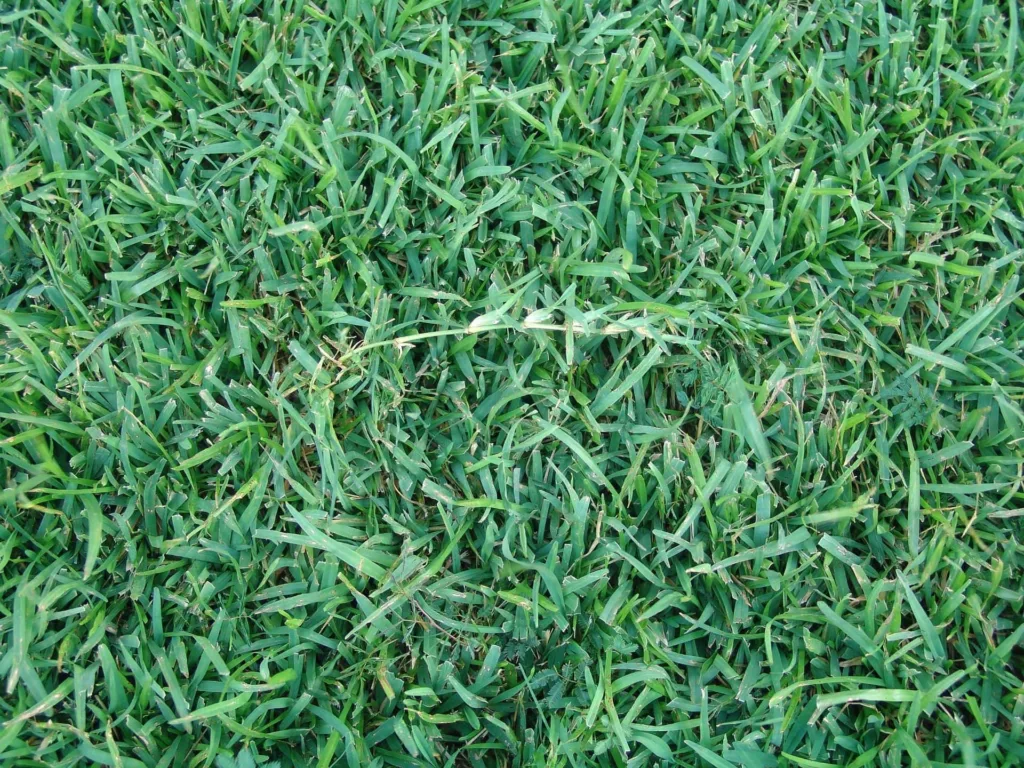Introduction
In an era of climate change and water scarcity, maintaining a vibrant green lawn has become increasingly challenging. Homeowners and landscapers alike face the daunting task of keeping their grass lush and healthy while conserving water. This is where drought-tolerant grass types come into play, offering a sustainable solution to this modern dilemma.
Choosing drought-resistant grasses brings numerous benefits. Not only do these hardy varieties require less water, but they also tend to be more resilient against pests and diseases. They can maintain their verdant appearance even during prolonged dry spells, reducing the need for constant watering and maintenance.
In this comprehensive guide, we’ll explore the world of drought-tolerant grass types, covering everything from their unique characteristics to planting and maintenance techniques. We’ll delve into the best varieties for different regions, how to choose the right grass for your specific needs, and even look at alternative landscaping options for extremely dry climates.
Understanding Drought Tolerance in Grasses
Drought tolerance in grasses is not just a simple trait but a complex set of adaptations that allow these plants to thrive in water-scarce conditions. But what exactly makes a grass drought-tolerant?
Drought-tolerant grass types have developed several mechanisms to cope with limited water availability:
- Efficient water use: These grasses can extract and utilize water more effectively from the soil.
- Reduced water loss: They have adaptations to minimize water loss through transpiration.
- Deep root systems: Many drought-tolerant grasses develop extensive root networks to access water deep in the soil.
- Dormancy capabilities: Some varieties can enter a state of dormancy during extreme drought, allowing them to survive until conditions improve.
By adapting our lawns to use drought-tolerant grasses, we’re not just ensuring a greener yard during dry spells. We’re also contributing to larger environmental benefits. These grasses typically require less fertilizer and fewer pesticides, reducing runoff and pollution. Moreover, they help conserve water, a critical resource in many regions.
Top Drought-Tolerant Grass Types for Different Regions
When it comes to selecting drought-tolerant grass types, it’s crucial to consider your specific climate and region. Grasses are generally categorized into two main groups: cool-season and warm-season grasses. Let’s explore some top contenders in each category:
Cool-season grasses
- Tall Fescue: This versatile grass boasts deep roots and excellent heat tolerance. It’s a popular choice for transitional zones and can maintain its color even during moderate drought.
- Fine Fescue: Comprising several species (such as Chewings, Hard, and Creeping Red Fescue), fine fescues are known for their ability to thrive in poor soil conditions and withstand drought.
- Kentucky Bluegrass (drought-tolerant varieties): While traditional Kentucky Bluegrass is water-hungry, newer cultivars have been developed with improved drought tolerance.
Warm-season grasses
- Bermuda Grass: A favorite for southern lawns, Bermuda grass is incredibly resilient and can recover quickly from drought stress once water becomes available.
- Zoysia Grass: Known for its dense growth and ability to withstand heavy foot traffic, Zoysia also demonstrates excellent drought tolerance.
- Buffalo Grass: This native North American grass is exceptionally drought-resistant and requires very little maintenance once established.
Native grass options for extreme drought conditions
For those in extreme drought conditions, native grasses adapted to your specific region can offer unparalleled resilience. These might include:
- Blue Grama: Native to the Great Plains, this grass can survive on as little as 12 inches of annual rainfall.
- Sideoats Grama: Another Great Plains native, this grass is known for its distinctive seed heads and excellent drought tolerance.
- California Fescue: For those on the West Coast, this native bunch grass offers both drought resistance and ornamental appeal.
Characteristics of Drought-Resistant Grass Types

Understanding the unique characteristics of drought-resistant grass types can help you make an informed decision when selecting the right variety for your lawn. Here are the key features that make these grasses resilient in dry conditions:
Deep root systems
One of the most crucial adaptations of drought-tolerant grasses is their extensive root system. These grasses develop roots that can reach depths of up to 15 feet or more, allowing them to access water reserves deep within the soil. This deep rooting not only helps the grass survive during dry periods but also improves soil structure and reduces erosion.
Narrow leaf blades
Many drought-resistant grasses have narrow, fine leaf blades. This adaptation reduces the surface area exposed to sun and wind, minimizing water loss through evaporation. The narrow blades also contribute to a denser turf, which helps shade the soil and further reduce water loss.
Dormancy capabilities
One of the most impressive features of drought-tolerant grasses is their ability to enter a state of dormancy during extreme drought conditions. When water becomes scarce, these grasses can essentially “shut down” their growth processes, turning brown but remaining alive. This survival mechanism allows the grass to conserve energy and resources until more favorable conditions return.
Recovery after drought stress
Drought-resistant grasses are not only able to survive dry periods but can also recover quickly once water becomes available again. This resilience is due to their efficient water uptake systems and stored energy reserves in their root systems.
Choosing the Right Drought-Tolerant Grass for Your Lawn
Selecting the perfect drought-tolerant grass type for your lawn involves more than just picking the most water-efficient option. Consider these factors to ensure your choice thrives in your specific conditions:
Assessing your climate and soil type
Your local climate and soil composition play a crucial role in determining which drought-tolerant grass will perform best. Consider factors such as:
- Average annual rainfall
- Temperature extremes
- Soil pH and texture
- Drainage characteristics
Considering sun exposure and shade tolerance
While many drought-resistant grasses thrive in full sun, some areas of your lawn may receive partial shade. Evaluate the sun exposure across your yard and choose a grass variety that can tolerate the light conditions in different areas.
Evaluating maintenance requirements
Different grass types have varying maintenance needs. Consider how much time and effort you’re willing to invest in lawn care. Some factors to think about include:
- Mowing frequency
- Fertilization needs
- Thatch management
- Pest and disease resistance
Balancing drought tolerance with other desired features
While drought tolerance is a priority, you may have other requirements for your lawn. Consider factors such as:
- Color and appearance
- Texture
- Foot traffic tolerance
- Recovery from wear and tear
By carefully weighing these factors, you can choose a drought-tolerant grass that not only survives in your climate but thrives and meets your specific needs.
Planting and Establishing Drought-Tolerant Grass

Successfully establishing drought-tolerant grass types requires careful planning and execution. Follow these steps to give your new lawn the best start:
Best times to plant drought-resistant grass types
Timing is crucial when planting drought-tolerant grasses. The ideal planting time depends on whether you’re using cool-season or warm-season grasses:
- Cool-season grasses: Plant in early fall or early spring when temperatures are mild and rainfall is more frequent.
- Warm-season grasses: Plant in late spring or early summer when soil temperatures have warmed up.
Soil preparation techniques
Proper soil preparation is essential for establishing a healthy, drought-resistant lawn:
- Test your soil: Conduct a soil test to determine pH levels and nutrient content.
- Remove existing vegetation: Clear the area of any existing grass or weeds.
- Till the soil: Loosen the top 4-6 inches of soil to improve root penetration.
- Amend the soil: Based on your soil test results, add organic matter or other amendments to improve soil structure and fertility.
- Level the area: Ensure the planting area is smooth and properly graded for good drainage.
Seeding vs. sodding options
Both seeding and sodding have their advantages when it comes to establishing drought-tolerant grass:
Seeding:
- More economical
- Allows for a wider variety of grass types
- Takes longer to establish (several weeks to months)
Sodding:
- Provides instant results
- Better for erosion control on slopes
- More expensive than seeding
Choose the method that best fits your budget, timeline, and specific lawn conditions.
Watering strategies during establishment
Proper watering is crucial during the establishment phase, even for drought-tolerant grasses:
- Initial watering: Keep the soil consistently moist (but not waterlogged) for the first few weeks after planting.
- Gradual reduction: As the grass establishes, gradually reduce watering frequency while increasing the duration of each watering session.
- Deep watering: Encourage deep root growth by watering deeply and less frequently once the grass is established.
Remember, even drought-tolerant grasses need regular watering during their establishment phase to develop strong, deep root systems that will help them withstand future dry periods.
Maintaining Drought-Tolerant Lawns
Once your drought-tolerant grass types are established, proper maintenance is key to keeping your lawn healthy and resilient. Here are some essential practices for maintaining your water-wise lawn:
Proper mowing techniques for water conservation
Mowing plays a crucial role in promoting drought tolerance:
- Mow high: Keep your grass at the upper end of its recommended mowing height. Taller grass shades the soil, reducing evaporation and promoting deeper root growth.
- Mow regularly: Avoid removing more than 1/3 of the grass blade length in a single mowing session.
- Keep blades sharp: Sharp mower blades make clean cuts, reducing stress on the grass.
- Leave clippings: Grass clippings act as a natural mulch, helping to retain soil moisture.
Fertilization practices for drought-resistant grasses
Proper fertilization helps strengthen your lawn’s drought resistance:
- Use slow-release fertilizers: These provide a steady nutrient supply without promoting excessive growth that increases water needs.
- Avoid over-fertilizing: Too much nitrogen can lead to rapid growth and increased water requirements.
- Time it right: Fertilize when the grass is actively growing, typically in spring for warm-season grasses and fall for cool-season varieties.
Irrigation tips to encourage deep root growth
Efficient watering practices are crucial for maintaining drought-tolerant lawns:
- Water deeply and infrequently: This encourages roots to grow deeper in search of water.
- Water early in the morning: This reduces water loss due to evaporation.
- Use smart irrigation systems: Consider installing a weather-based irrigation controller that adjusts watering based on local conditions.
- Check for leaks: Regularly inspect your irrigation system for leaks or misaligned sprinklers.
Dealing with weeds in drought-tolerant lawns
Weed management is essential for maintaining a healthy, drought-resistant lawn:
- Maintain a dense turf: A thick, healthy lawn naturally suppresses weed growth.
- Hand-pull weeds: Remove weeds by hand before they can establish and spread.
- Use mulch: Apply organic mulch in bare spots to suppress weed growth and retain soil moisture.
- Consider selective herbicides: If necessary, use herbicides specifically designed for your grass type and target weeds.
By following these maintenance practices, you can ensure your drought-tolerant lawn remains healthy, beautiful, and resilient even during dry periods.
Enhancing Drought Tolerance in Existing Lawns
If you already have an established lawn and want to improve its drought tolerance, there are several strategies you can employ without completely replacing your existing grass. Here’s how you can enhance the drought resistance of your current lawn:
Overseeding with drought-resistant varieties
Overseeding is the process of planting new grass seeds directly into existing turf. This technique can help introduce more drought-tolerant varieties into your lawn:
- Choose compatible grass types: Select drought-resistant grass seeds that are compatible with your existing lawn and climate.
- Time it right: Overseed in early fall for cool-season grasses or late spring for warm-season varieties.
- Prepare the lawn: Mow your existing grass short and rake to expose soil for good seed-to-soil contact.
- Spread seeds evenly: Use a seed spreader for even distribution.
- Keep the area moist: Water lightly and frequently until the new grass establishes.
Improving soil quality for better water retention
Healthy soil is crucial for drought tolerance. Here’s how you can improve your soil’s water-holding capacity:
- Add organic matter: Incorporate compost or other organic materials to improve soil structure and water retention.
- Use soil conditioners: Products containing humic acid or seaweed extract can improve soil health.
- Apply a thin layer of topsoil: If your soil is poor, adding a thin layer (1/4 inch) of quality topsoil can help.
Aeration and dethatching to promote root health
Compacted soil and excessive thatch can hinder root growth and water penetration. Regular aeration and dethatching can help:
- Aerate annually: Use a core aerator to remove small plugs of soil, allowing air, water, and nutrients to penetrate deeper.
- Dethatch when necessary: Remove the layer of dead grass and roots that accumulates between the soil surface and the green grass blades if it exceeds 1/2 inch thick.
- Time it right: Perform these tasks when your grass is actively growing and not under stress.
By implementing these strategies, you can gradually transform your existing lawn into a more drought-tolerant landscape without the need for a complete overhaul.
Drought-Tolerant Grass Alternatives

While drought-tolerant grass types are an excellent option for many landscapes, some situations may call for alternative approaches. Here are some water-wise options to consider:
Xeriscaping and rock gardens
Xeriscaping is a landscaping method that reduces or eliminates the need for supplemental water from irrigation. Key principles include:
- Use native and drought-tolerant plants: Choose plants adapted to your local climate.
- Group plants with similar water needs: This allows for more efficient irrigation.
- Incorporate hardscaping: Use rocks, gravel, and pavers to create interesting landscapes without the need for water.
- Minimize turf areas: Replace large lawn areas with drought-tolerant groundcovers or hardscaping.
Low-water ground covers
Ground covers can provide a lush, green appearance while using less water than traditional lawns. Some drought-tolerant options include:
- Creeping Thyme: Fragrant and attractive to pollinators
- Sedum: Succulent plants that come in various colors and textures
- Woolly Yarrow: Forms a dense, low-growing mat
- Ice Plant: Produces colorful, daisy-like flowers
Artificial turf options
While not a natural solution, artificial turf has come a long way in recent years:
Pros:
- No watering required
- Low maintenance
- Stays green year-round
Cons:
- High initial cost
- Can get hot in direct sunlight
- Not environmentally friendly
When considering artificial turf, weigh the long-term costs and benefits against natural drought-tolerant options.
Common Challenges and Solutions for Drought-Tolerant Lawns
While drought-tolerant grasses offer many advantages, they can present some challenges. Here’s how to address common issues:
Addressing patchy growth
Patchy growth can occur even in drought-resistant lawns, especially during establishment or extreme stress periods.
Solutions:
- Overseed bare spots: Use the same drought-tolerant grass variety to fill in patchy areas.
- Improve soil quality: Address any soil compaction or nutrient deficiencies.
- Adjust irrigation: Ensure all areas of your lawn receive adequate water.
Managing color variations during stress periods
Some drought-tolerant grasses may change color or go dormant during extreme drought.
Solutions:
- Set expectations: Understand that some color change is normal and temporary.
- Deep, infrequent watering: This encourages deeper root growth and better drought resistance.
- Consider overseeding: Mix in grass varieties that maintain color better during stress.
Balancing drought tolerance with foot traffic resistance
Some drought-tolerant grasses may not stand up well to heavy foot traffic.
Solutions:
- Choose appropriate varieties: Some drought-tolerant grasses, like Bermuda or Zoysia, handle traffic better than others.
- Create pathways: Use stepping stones or mulch paths to direct traffic and reduce wear on the grass.
- Rotate high-traffic areas: If possible, periodically redirect foot traffic to allow stressed areas to recover.
Future of Drought-Tolerant Grass Types
As climate change continues to affect our environments, the development and adoption of drought-tolerant grass types are likely to accelerate. Here’s what we might expect in the coming years:
Ongoing research and development
Scientists and turf grass breeders are continuously working to develop new and improved drought-tolerant varieties. Areas of focus include:
- Enhanced drought resistance: Breeding for even greater water efficiency and stress tolerance.
- Improved aesthetics: Developing varieties that maintain better color and texture during drought stress.
- Pest and disease resistance: Creating grasses that can withstand common lawn problems without excessive chemical inputs.
Emerging hybrid varieties for extreme conditions
Researchers are exploring hybridization techniques to combine the best traits of different grass species. We may see:
- Cool-season/warm-season hybrids: Grasses that can thrive in transition zones with both hot summers and cold winters.
- Native grass hybrids: Combining the extreme drought tolerance of native grasses with the turf quality of traditional lawn grasses.
Potential impact of climate change on grass selection
As climate patterns shift, we may see changes in which grass types are recommended for different regions:
- Expanded range for warm-season grasses: As temperatures rise, warm-season grasses may become viable options in traditionally cool-season areas.
- Increased demand for heat-tolerant varieties: Even in areas not prone to drought, increasing temperatures may drive demand for grasses that can withstand heat stress.
- Emphasis on adaptability: Grass varieties that can tolerate a wide range of conditions may become more popular as weather patterns become less predictable.
Conclusion
As we’ve explored throughout this guide, drought-tolerant grass types offer a sustainable solution for maintaining beautiful lawns in challenging climate conditions. Let’s recap the key points:
Recap of key drought-tolerant grass types
We’ve discussed several excellent options for drought-resistant lawns, including:
- Cool-season grasses like Tall Fescue and drought-tolerant Kentucky Bluegrass varieties
- Warm-season grasses such as Bermuda, Zoysia, and Buffalo grass
- Native grass options for extreme drought conditions
Importance of choosing the right grass for your situation
Selecting the appropriate drought-tolerant grass type for your specific climate, soil conditions, and lawn use is crucial for success. Consider factors such as:
- Your local climate and typical rainfall patterns
- Soil type and quality
- Sun exposure and shade levels in your yard
- Expected foot traffic and lawn use
Encouraging sustainable lawn care practices
Adopting drought-tolerant grasses is just one part of a larger approach to sustainable landscaping. We encourage you to:
- Embrace water conservation: Use efficient irrigation systems and water deeply but infrequently.
- Practice proper maintenance: Mow at the proper height, fertilize responsibly, and manage pests naturally when possible.
- Consider lawn alternatives: Incorporate native plants, hardscaping, or ground covers where appropriate.
By choosing the right drought-tolerant grass types and implementing sustainable lawn care practices, you can enjoy a beautiful, resilient lawn while conserving water and supporting a healthier environment.
FAQs About Drought-Tolerant Grass Types
To wrap up our comprehensive guide, let’s address some frequently asked questions about drought-tolerant grass types:
Q: How much water do drought-tolerant grasses really save?
A: Water savings can be significant, typically ranging from 30% to 50% compared to traditional lawn grasses. However, the exact amount depends on your specific grass type, climate, and lawn care practices.
Q: Can I mix different drought-resistant grass types?
A: Yes, you can create a mix of compatible drought-resistant grasses. This can provide better coverage and resilience. However, stick to grasses with similar growth habits and water requirements for the best results.
Q: Are drought-tolerant grasses more expensive?
A: Initially, some drought-tolerant grass seeds or sod may cost more than traditional varieties. However, the long-term savings in water bills and reduced maintenance often offset the upfront costs, making them a cost-effective choice over time.
Q: How long does it take for drought-resistant grass to establish?
A: Establishment time varies depending on the grass type and method (seed vs. sod). Generally, expect:
- Seeded lawns: 1-3 months for initial establishment, up to a year for full maturity
- Sodded lawns: 2-3 weeks for rooting, 1-2 months for full establishment
During this time, regular watering is crucial to support root development.
Q: Can drought-tolerant grasses survive complete water restrictions?
A: Many drought-tolerant grasses can survive extended periods without water by going dormant. However, even the most resilient grasses need some water to thrive long-term. During extreme drought or water restrictions, minimal deep watering (if allowed) or waiting for natural rainfall will help the grass recover once conditions improve.
By understanding these aspects of drought-tolerant grass types, you’ll be better equipped to make informed decisions about your lawn and contribute to water conservation efforts in your community. Remember, a resilient, water-wise lawn is not only beautiful but also environmentally responsible.


